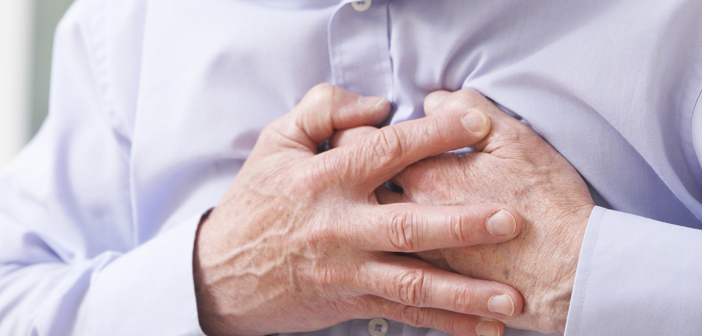When most of us think about heart attack symptoms, we list chest pain first. It is one of the most common signs – discomfort in the chest such as a feeling of pressure, squeezing, fullness or pain in the chest area can signal that the heart is not functioning properly. But there are many other symptoms that are important to be aware of, as well.
There are many heart attack symptoms of which you may be unaware.
Upper Body Discomfort – Back pain and jaw pain are often associated with myocardial infarction (heart attack), especially in women. Shooting pain that runs down either arm
is also a sign that there is a problem with blood flow to the heart.
Shortness of Breath – When the heart cannot pump blood, oxygen cannot get to the cells
in the body. Shortness of breath is usually accompanied by other signs such as fatigue
and dizziness.
Cold Sweat and Anxiety – Profuse sweating is also associated with heart attack. The feeling of anxiety or dread is a reaction to restriction of blood flow to the heart muscle.
Nausea – While it is associated with a variety of health concerns, nausea is especially associated with heart attack when accompanied by other symptoms.
Indigestion – Because the heart is attempting to direct blood flow to the most vital organs, less blood is going to the stomach, which causes indigestion.
Fatigue – When the body is oxygen deprived, fatigue follows quickly. Because blood flow to the heart is restricted during a heart attack, feelings of extreme tiredness can be a symptom.
Dizziness – This is sometimes the first sign of a heart attack. It occurs because flood flow to the brain has been restricted.
Flu-Like Symptoms – Sometimes a heart attack will cause symptoms such as vomiting
and nausea. This is especially common among women.
Racing Heart – Heart palpitations are often described as a racing heart. The heart begins beating faster to try to compensate for the loss of pumping capacity.
Men suffering a heart attack usually come to the ER with the typical symptoms of chest discomfort: pressure, squeezing, fullness or chest pain. Women, on the other hand, frequently experience more vague symptoms. These may include back pain or jaw pain along with nausea, vomiting and flu-like symptoms.
When a person comes to Hurley Medical Center with heart attack symptoms, they first go to the Emergency Department. There, an EKG is done within five minutes of the time they arrive in the department. A physician reads the EKG within three minutes of its completion. Once the ED physician determines the patient is having a heart attack, a STEMI Alert is activated so that everyone in the hospital is aware there is a patient in the ED needing assistance from a cardiologist and the Cath Lab. As soon as they arrive, someone from the Cath Lab goes to the ED to accompany the patient up to the Cath Lab. Once the patient arrives, the cardiologist and Cath Lab staff work as quickly and effectively as possible to open the blockage in the cardiac vessel so blood flow and oxygen are delivered to the heart. The quicker blood flow can be reestablished, the less damage will have been done to the heart.
Awareness of the possible signs and symptoms and knowing that they can differ between men and women is crucial to reacting quickly and surviving a heart attack.








